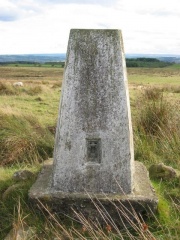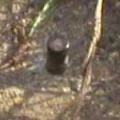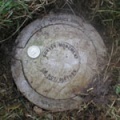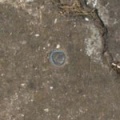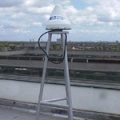Category:Types
Contents
TYPES OF TRIGPOINT
Pillar
The classic trigpoint and a welcome sight for hill walkers everywhere! A concrete pillar about 4' high, with a flush bracket near the base and a circular plate on top with grooves for mounting a theodolite. 6977 Pillars are listed in the T:UK database. See the main Pillar article for further details of triangulation pillars.
FBM - Fundamental Benchmark
An underground chamber topped with a short granite pillar. 207 Fundamental Benchmarks are listed in the T:UK database. See the main FBM article for further details of FBMs.
Intersected stations
The 1936 retriangulation used not only installed survey marks, such as the above, but also made use of existing features, such as flagstaffs, towers and the like. In many cases, these Intersected Stations are associated with a smaller, fixed survey mark. For example, a (more permanent) bolt may be installed near to a (more visible) flagstaff. 6401 Intersected stations are listed in the T:UK database.
Active Station
196 Active Stations are listed in the T:UK database (including those which are no longer used), sited at about 30 locations around the country. These are GPS receivers which constantly log their readings (known as RINEX data) on the Ordnance Survey website. This allows a very high level of positional accuracy to be achieved, without the need to physically occupy one of the Passive Stations.
Additional survey marks
As well as the familiar pillars, the Ordnance Survey also installed a large number of smaller survey marks. There are many different varieties of these, including:
Beacons, Berntsens, Blocks, Bolts, Brass Plates, Buried Blocks, Cairns, Cannons, Centres, Covered Bolts, Curry Stools, Cuts, Discs, Fenomarks, Ferrule blocks, Gravity Stations, Holes, Intersected Stations, Lamps, Marks, Memorials, Old trigs, Pegs, Pipes, Platform Bolts, Poles, Posts, Punch marks, Pylons, Rivets, Rods, Spiders, Stones, Surface Blocks, Topographs, Turrets and Wires
Like the pillars, these stations were used both for the original 1936 retriangulation, and some also form part of the network of Passive stations. Witness marks were often installed in order to help recover the coordinates of a trig point in the event of its loss. A timeline of the dates for Computing, Maintenance and Levelling is available. A table of newly discovered trigs is also available.
Pages in category ‘Types’
The following 45 pages are in this category, out of 45 total.
ABCDF |
F cont.GHILMNOP |
P cont.RSTVW |
